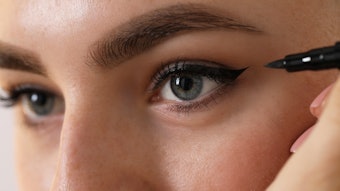I’ve been doing this long enough now that I can now recognize the one-, two- and three-year patterns, and I’m again seeing the shift in the approach to innovation. And before I say more, I want to note that I’m not knocking anyone’s efforts and not making any judgement as to whether the shift is good or bad. I am noting it because I think it’s something to be aware of in order to set both short- and longer-term directions, and I suspect the overall shift in innovation is a trickle-down impact of retailer trends.
Using holiday performance as a barometer, retail sales are just okay. There are growth stories, but as The NPD Group’s chief industry analyst Marshal Cohen noted during the West Coast edition of The NPD Group’s Year In Review (presented by CEW), the holiday sales season began weeks earlier in 2013 than typical. So the performance picture is a little fuzzy. And though I’m sure it’s a complicated story of macro trends, economic ups and downs, and evolving shopping outlets and habits, price has definitely become a primary tool to get consumers to the counter.
“2013 was the year retailers used price as the lure,” Cohen told me at the Santa Monica CEW event. “When we surveyed post holiday shopping, 52% of shoppers found products to be neither new or exciting. Price is being used as the driver; we need to see [brands and retailers] go back in time to lure consumers to buy products for reasons other than price.”
I get it though. Consumers had to make harder choices on their spending in recent years, and the retail response was adjusting prices down and coaxing with specials, which puts cost pressures on brands (and brand loyalty) and then on suppliers—impacting the approach to innovation. Maybe even impacting what we think of as innovation. For many brands and suppliers right now, it’s about looking to do more with the offerings already available—looking deeper into the possibilities and potential of what they’ve already developed.
Cohen urged that innovation is what will drive growth, that growth is not an outcome of simply moving bodies into stores through sales events. And innovation, he said, is about creating necessity for a product—about creating something that is uniquely different.
“Consumers are currently buying for replenishment instead of desire,” Cohen commented. “But innovation will prompt a consumer to buy before they actually need new [products]. Desire is created faster when there is innovation.”
I think that’s the crux of innovation for the beauty industry. Innovation does not have to be a huge leap to be valuable. It can be step changes—revealing new claims for an existing product, new data-backed modes of action for an ingredient, improvements to a given packaging technology and so on. I think, though, that in order for those kind of real, relevant and truly innovative step changes to matter—stirring consumers’ desire and subsequent predilection to spend—there must be a true understanding of consumer needs and trends. It’s got to be a deeper look beyond the latest product craze. Innovation is not the umpteenth version or variation of the latest hot product type. That eventually squelches desire. It rings false. And true innovation is built through honestly meeting a need or desire.










